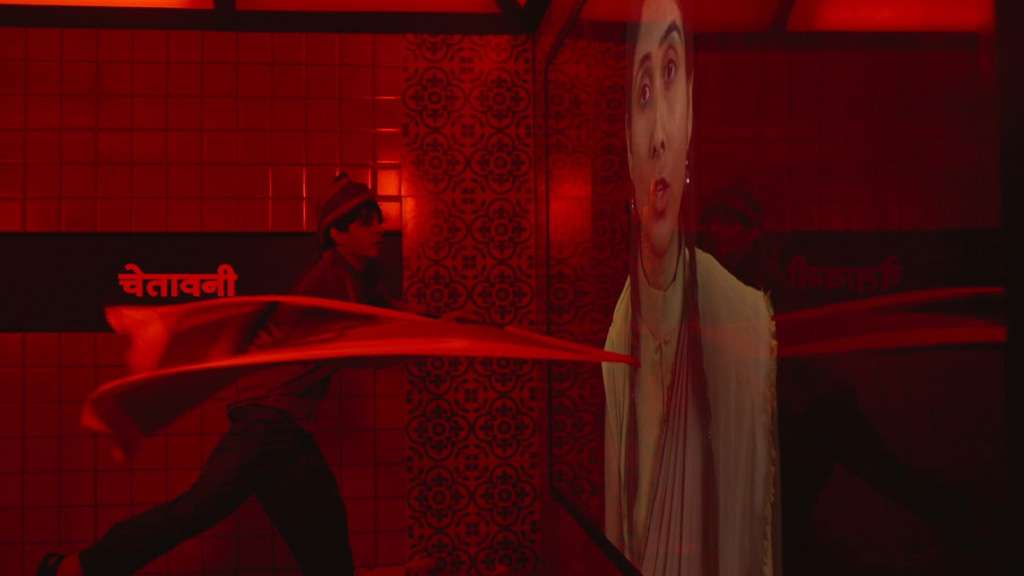It’s been two days since I have watched Dibakar Banerjee’s “Tees” (2024), and it has bothered me to no end, my inability to articulate my thoughts about the film in a coherent fashion. Perhaps that could be because Banerjee, unlike many other filmmakers dealing with social messaging, is extremely cognizant about the evils plaguing the current climate and how insidious they actually are in exhibiting themselves—be it in the garb of bureaucracy or of jealousy.
You can argue that “Tees” is a grab bag of social messages that Banerjee and screenwriter Gaurav Solanki throw into a blender, but that would take away from the nuanced and controlled storytelling the film exhibits within its anthology structure. Essentially taking the conceit of three different anthologies of storytelling united by Banerjee’s own acerbic perspective on the present, a further wrinkle is introduced by creating the three stories as part of a multi-generational tapestry.
The 1989-set story, taking place in Srinagar during the early days of the insurgency, follows the friendship between a Muslim and a Kashmiri Hindu family, devolution represented by the slow straining of friendship between Ayesha (Manisha Koirala) and Usha (Divya Dutta). Banerjee’s masterstroke lies in capturing the potency of the political through the subtle nuances of the personal. Ayesha’s disillusionment with work stirs a deep nostalgia—one where her religion was part of her identity, rather than its defining feature. As her present hurtles toward an inevitable conclusion, the looming risk of displacement pushes her to reconnect with her culture and roots. She seeks solace in memory and tradition, whether through wistful reminiscence or through the careful craft of Kashmiri recipes.
The 2019 story is connected to the 1989 era through familial ties, following Ayesha’s adult daughter, Zia (Huma Qureshi) and her partner, Meera as they try to find a home within the metropolis of Mumbai. The inherent suggestion of Banerjee of the search for a home being far easier for a same-sex couple than a Muslim is striking. But what makes his silent, yet palpable rage damning is his acknowledgment of the existence of all these attributes that the increasingly intolerant middle class can raise to push people away not fitting their attributes. Education and talent becoming secondary to religious and sexual identity further highlights said intolerance. But what does work, within this urgent yet nuanced portrayal, is how it never shies away from Zia’s character and her internal turmoil.

The future set story of 2042, and the one that is easily the most unique, is also the one that risks being completely at the service of its ideas rather than the service of its characters. Opening with a baffling image of a digital cat coming towards the screen before revealing itself to be an avatar for a character meeting with Shashank Arora’s Ahnand Draboo, a writer banned from publishing a book (sharing the eponymous title of the film) about the riots of 2030, and now having to work as an escort to make ends meet.
His meeting with a young woman of the ministry who deigns to connect with him beyond his station in life (literal and metaphorical) interested in his talent leads to the two of them entering a romantic relationship. Through this strand, Banerjee recounts the plight of inherited trauma and the risk of a culture being utterly wiped out as censorship insidiously begins to put expression—both artistic and emotional—into a chokehold. This future-set storyline feels like a logical extension of Banerjee’s indication of “five minutes into the future” that LSD 2 would provide a glimpse at. The extrapolation of said future, where technological advancement exists seamlessly within the sprawl of economic disparity and governmental restrictions over behavior as well as air intake, is terrifying in how prescient it seems, rather than unlikely.
It’s debatable whether each story is equally impactful, but as a larger narrative about a tapestry of the Indian experience, it is engrossing, primarily because of its peculiarity, but more so because of how it manages to edit and place sequences of the three timelines within the narrative without making the jump between those seem off-putting.
The film’s balance of the garish and tacky portrayal of the future to the quiet, subdued portrayal of the present, connected by a somewhat brighter but no less insidious color palette of 2019, gives a cinematographic connectivity that also allows for the themes of Islamophobia and displacement to echo between the three generations, spanning 90 years. It’s debatable whether those echoes are uniform or whether some of the emotional or cathartic moments towards the end actually land, but “Tees” is unique because of its ambition as well as its stubbornness to remain a character study and through that lens explore the societal polarization within the country.
“Tees” is that rare film that doesn’t need its importance to be shouted out from the rooftops, but somehow its inability to find a home and thus remain unreleased further increases said importance. A movie dealing with censorship remaining unreleased is one of those deliciously ironic moments that could be enjoyed as a moment of wry comedy. But that is short-lived. The prevalent emotion is one of frustration and earnest hope that the film gets released soon. Art, as complicated and thorny and ambitious as this, deserves to be seen.





![The New Girlfriend [2015]: A pyschosexual exploration of Friendship!](https://79468c92.delivery.rocketcdn.me/wp-content/uploads/2016/02/1436307724-The_New_Girlfriend_tickets-768x432.jpg)
![American Psycho [2000] : Ugly Crab Inside a Shiny Shell](https://79468c92.delivery.rocketcdn.me/wp-content/uploads/2016/12/american_psycho-768x432.jpg)
![URI: The Surgical Strike [2019] Review: Josh Is High](https://79468c92.delivery.rocketcdn.me/wp-content/uploads/2019/01/uri_4_0-768x432.jpeg)
![Dear Comrades! [2021] Review: A gripping tale about the two days of the Novocherkassk massacre](https://79468c92.delivery.rocketcdn.me/wp-content/uploads/2021/05/Dear-Comrades-2-highonfilms-768x512.jpg)

![The Passion of Joan of Arc [1928]: Every Bit Worthy Of Its Legendary Status](https://79468c92.delivery.rocketcdn.me/wp-content/uploads/2018/06/the-passion-of-joan-of-arc-768x542.jpg)